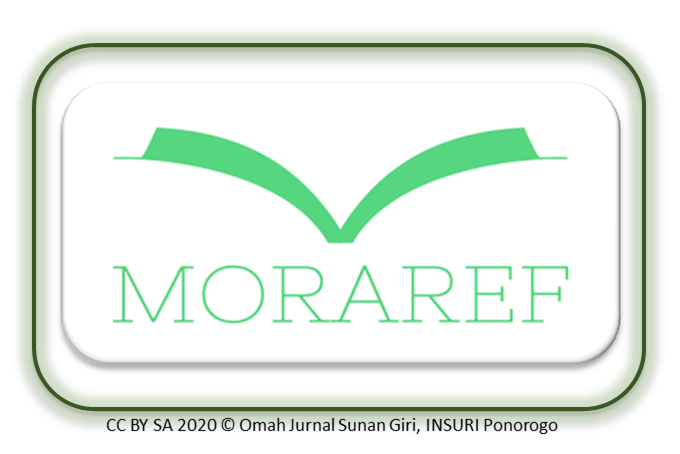Penguatan Kapasitas Petani Kopi Gunung Wayang Menuju Pengembangan Wisata Desa Sumberwuluh Melalui Metode CBPR
Keywords:
Pemberdayaan Petani Kopi, Gunung Wayang, Pengembangan DesaWisataAbstract
Gunung Wayang Tourism Development through coffee farmers in order to realize the optimization of the potential in Mount Wayang Sumberwuluh Village Candipuro District Lumajang Regency with Community based participatori researchMethod. The process of utilizing local natural resources from coffee farming as one of the development of the enthusiasm of local residents to make Sumberwuluh Village a tourist village. The results of the study were conducted through several processes of empowering coffee farmers in Sumberwuluh Village.The process of empowering coffee farmers continues in three stages, namely the implementation of inculturation, assistance and strengthening the capacity of coffee farmers. This study uses the CBPR method, research with several stages in the field starting from laying the foundation, research planning, gathering and acting on findings. Steps are taken to start deeper into the life and potential that exists in Sumberwuluh Village. Strategies in developing coffee capacity, by providing coffee in the form of ground coffee and coffee muffins. In this case, cooperation with village institutions is urgently needed. The results of this empowerment of coffee farmers, support to add to the aesthetic value of packaging coffee and processed coffee products with a modern touch as a souvenir in Gunung Wayang Tourism which is a product of Sumberwuluh Village. Forms of farmer empowerment, starting from planning, implementation and evaluation. Related to the challenges in empowering coffee farmers related to efforts to maintain old habits that have been implemented by coffee farmers before this innovation, the attitude of people who need can not be supported and try new things, the limited need for tourism assistance while improving promotional activities. Community empowerment through village development has implications for socio-cultural resilience including strengthening and various changes in social, cultural and environmental values.
Keywords: Empowerment of Coffee Farmers; Gunung Wayang; Tourism Village Development
Abstrak
Pengembangan Wisata Gunung Wayang melalui optimalisasi potensi ekonomi petani kopi diDesa Sumberwuluh Kecamatan Candipuro Kabupaten Lumajang melalui metode Community based participatori research. Proses pemanfaatan sumber daya alam lokal daripertanian kopi sebagai salah satu pembangkit semangat warga sekitar untuk mengembangkan potensi wisataDesa Sumberwuluh. Hasil proses pemberdayaan petani kopi yang didahului dengan penelitian di Desa Sumberwuluhberlangsung selama satu bulan, dalam tiga tahapan, yaitu tahap layying the foundation, research planning, gathering dan acting on finding. Langkah itu dilakukan untuk menelusuri lebih dalam kehidupan dan potensi yang ada Desa Sumberwuluh. Strategi dalam pengembangan kapasitas petani kopi hingga menghasilkan beberapa olahan dari kopi robusta, antara lain kopi original, kopi jahe dan kue muffin coffee. Hasil dari pemberdayaan petani kopi ini, bertujuan untuk menambah nilai ekonomi potensi desa dan estetika pengemasan produk kopisebagai olahan kopi dengan sentuhan modern sebagai buah tangan di Wisata Gunung Wayang yang menjadi produk dari Desa Sumberwuluh. Bentuk-bentuk pemberdayaan petani kopi melibatkan partisipasi masyarakat mulai dari perencanaan, pelaksanaan hingga evaluasi. Proses awal pemberdayaan membutuhkan bantuan stakeholder lokal dalam membangun komitmen masyarakat dalam mengembangkan wisata Gunung Wayang Desa Sumberwuluh.
Kata Kunci: Pemberdayaan Petani Kopi; Gunung Wayang; Pengembangan Desa Wisata
References
Andayani, Anak Agung Istri, Edhi Martono, and Muhamad. 2017. “Pemberdayaan Masyarakat Melalui Pengembangan Desa Wisata Dan Implikasinya Terhadap Ketahanan Sosial Budaya Wilayah (Studi Di Desa Wisata Penglipuran Bali).” Jurnal Ketahanan Nasional 23 (1): 1–16.
Badan Ekonomi Kreatif. 2017. “Data Statistik Dan Hasil Survei EKONOMI KREATIF.”
Bekraf. n.d. “Desain Produk.” https://www.bekraf.go.id/subsektor/page/36-desain-produk.
Fithriyah, Asyrifatul. 2017. “Mitigasi Bencana Air Tambak Drop Melalui Partisipasi Kelompok Petani Tambak Ikan Di Desa Wadak Lor Kecamatan Duduksampeyan Kabupaten Gresik.” UIN Sunan Ampel Surabaya.
Harahap, Erni Febrina. 2012. “Pemberdayaan Masyarakat Dalam Bidang Ekonomi Untuk Mewujudkan Ekonomi Nasional Yang Tangguh Dan Mandiri.” Jurnal Manajemen Dan Kewirausahaan 3 (2): 78–96.
Morgan, W. John. 2006. “GEORG LUKÁCS Cultural Policy, Stalinism and the Communist International.” International Journal of Cultural Policy 12 (3): 257–71.
Nastain, Muhammad. 2017. “Branding Dan Eksistensi Produk (Kajian Teoritik Konsep Branding Dan Tantangan Eksistensi Produk).” CHANNEL Jurnal Komunikasi 5 (1): 14–26.
Nurjanah, Siti. 2013. “Analisis Pengembangan Program Bisnis Industri Kreatif Penerapannya Melalui Pendidikan Tinggi.” Jma 18 (2): 141–51.
Oscario, Angela. 2013. “Pentingnya Peran Logo Dalam Membangun Brand.” Humaniora 4 (1): 191.
Setyanti, Sri Wahyu Lelly Hana. n.d. “Peran Quadruple Helix Untuk Meningkatkan Kreatifitas Dan Kinerja Inovasi Industri Kreatif Indonesia.” Sinergitas Quadruple Helix, 244–51.
Yenata, Sany Tifani, and F. Anisa Herawati. 2014. “Pengaruh Tingkat Ketertarikan Pada Desain Logo Dan Nama Merk Terhadap Brand Image.”
Soft File Profil Desa Sumberwuluh 2019.
Sarah Banks,Community Based Participatory Research A Guide to Ethical Principles and Practice, Center for Social Justice and Community Action, Durham University, UK. 2012, h. 6.
Wilma Brakefield-Caldwell dan Edith Parker, Successful models combining intervention and basic research in the context of community based participatory research, dalam Liam R. O’Fallon, Frederick L. Tyson, Allen Dearry, Successful Models of Community-Based Participatory Research, National Institute of Health, Washington DC, 2000, p. 575
Downloads
Published
Issue
Section
License
The author(s) retain/s the copyright and grant/s Muharrik: Jurnal Dakwah dan Sosial the first publication rights licensed under the Creative Commons Attribution-NonCommercial 4.0 International (CC BY-NC 4.0) , which allows others to access (search, read, download and quote), share (copy and redistribute the material in any media or format) and adapt (mix, modify and develop) works for legitimate non-commercial purposes, with recognition of the authorship of the work and its initial publication in this journal.













